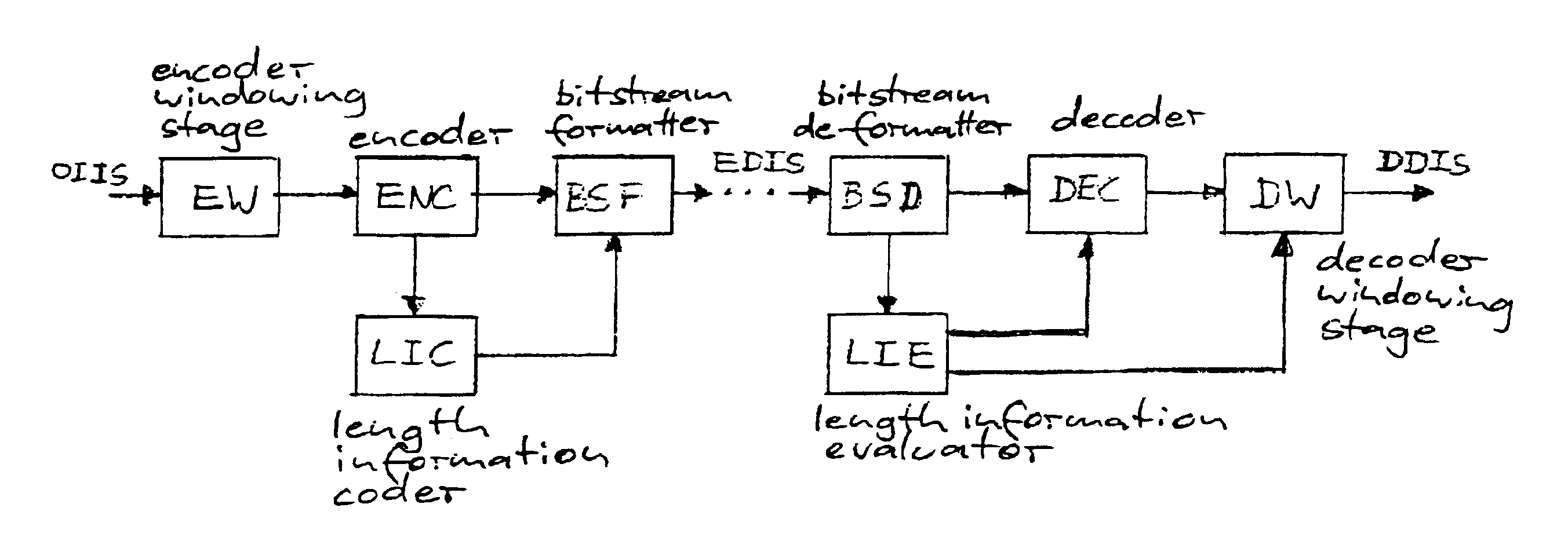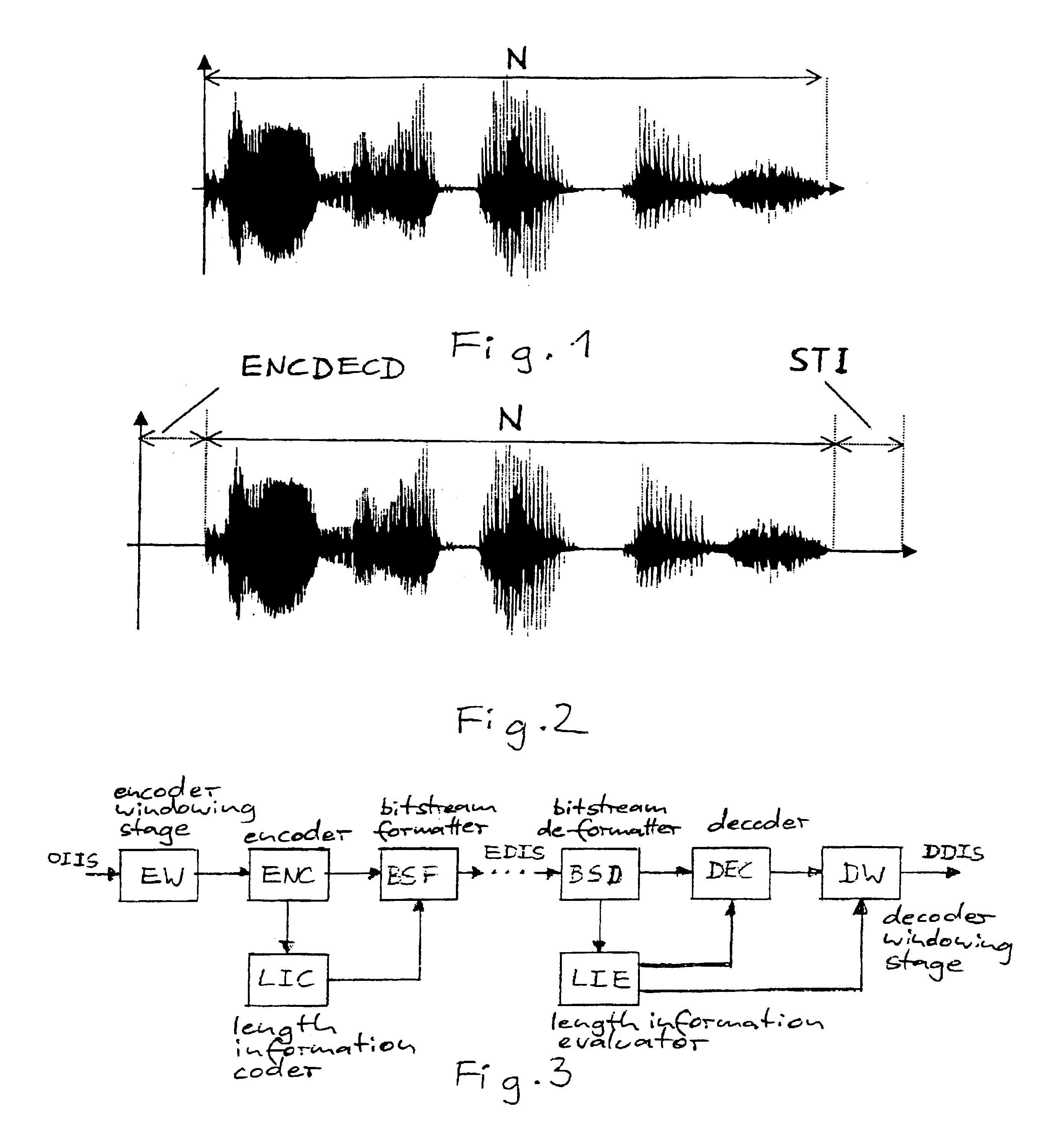Method and apparatus for encoding and for decoding a digital information signal
a digital information and signal technology, applied in the field of bitrate reduction encoding and decoding of information, can solve the problem of annoying differences in length
- Summary
- Abstract
- Description
- Claims
- Application Information
AI Technical Summary
Benefits of technology
Problems solved by technology
Method used
Image
Examples
Embodiment Construction
[0030]In studio sound or audio processing the available analog audio signals (e.g. at the output of microphone amplifiers) are converted into digital signals, applying the principles of sampling and quantisation. ‘Sampling’ means that signal amplitude values are taken in regular intervals. The reciprocal value of the temporal intervals is the sampling rate. According to the Nyquist or sampling theorem the original content of the sampled signals can be recovered error-free, if they contain maximum frequencies up to half the sampling rate only. Typical sampling rates used in audio processing are e.g. 44.1 kHz or 48 kHz, which correspond to sampling intervals or clocks of 22.67 μs or 20.83 μs, respectively. ‘Quantisation’ means that a reduced quantity of amplitude values is assigned to the basically finely resolved signal sample values, according to a quantisation characteristic. Thereby the resolution of the amplitude values becomes limited and the irreversible loss of information det...
PUM
| Property | Measurement | Unit |
|---|---|---|
| sampling frequency | aaaaa | aaaaa |
| time | aaaaa | aaaaa |
| length | aaaaa | aaaaa |
Abstract
Description
Claims
Application Information
 Login to View More
Login to View More - R&D
- Intellectual Property
- Life Sciences
- Materials
- Tech Scout
- Unparalleled Data Quality
- Higher Quality Content
- 60% Fewer Hallucinations
Browse by: Latest US Patents, China's latest patents, Technical Efficacy Thesaurus, Application Domain, Technology Topic, Popular Technical Reports.
© 2025 PatSnap. All rights reserved.Legal|Privacy policy|Modern Slavery Act Transparency Statement|Sitemap|About US| Contact US: help@patsnap.com



